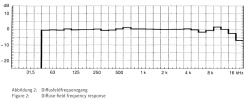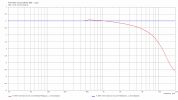OP
- Thread Starter
- #41
As far as I know one would need headphones that have binaural target curves or room acoustics that show a neutral linear music power vs frequency (thus enabling using headphones with Harman target).
I don't know if I understand you correctly, there are several types of binaural recordings (but beware, my knowledge on this subject is limited).But yes, obviously if the binaurally recorded speaker has a drop that is 1) faithfully recorded by the microphones but 2) compensated by a peak on the headphones used for comparison... any analysis is off the table.
One contains a complete HRTF (for example KEMAR dummy head) and cannot be listened to with "normal" headphones if not further processed, because the "normal" headphones themselves reproduce the frequency response of a HRTF. So you would hear the HRTF twice, so to speak - once contained in the binaural recording and once generated by the headphones to simulate the human outer ear.
Such a recording requires specially equalized headphones.
But if you record with normal stereo microphones and only take care of the physical separation of the microphones (by a head model or a wooden plate), there is no (or no complete) HRTF in the recordings, but for example only the delay that our head causes.
Or the dummy head with the included microphones is itself calibrated again to a "flat" playback curve, allowing the binaural recording to be listened to with headphones or loudspeakers, but with headphones the spatial information contained in the binaural recording is reproduced more realistically - this is what the Neumann KU100 dummy head does.
Here is a comparison of two different dummy heads and HRTF of subjects. Of course, the tiny recording microphone could not be placed directly in front of the eardrum of the test subjects, therefore their HRTF is always "erroneous", since the ear canal resonance is partially missing.
You can nicely see that the KU100 is calibrated for almost flat playback, this prevents the HRTF from being applied a second time when listening with headphones.
Source: A Perceptual Evaluation of Individual and Non-Individual HRTFs: A Case Study of the SADIE II Database


